

Rob Fulop interview
By Scott Stilphen
(1993, 2000, 2023)
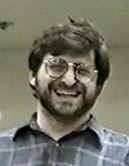
Back in 1993, I first had the opportunity to speak with Rob Fulop - an accomplished 2600 game designer with both Atari and Imagic, and then the Creative Director and co-partner of P.F. Magic. His work with the VCS earned him several industry accolades, and the prestigious Game of the Year award in 1982 for his groundbreaking achievement with Demon Attack. Over the following 3 decades, I've talked with Rob over a range of various topics relating to video games, and I've always come away impressed and informed by both his experiences and his recollections.
Q: Let's start with your educational background.
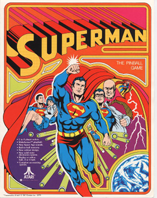 Rob Fulop: I have an Electrical
Engineering degree from the University of California in Berkley (in 1978).
My summer job was at Atari. I was hired by Nolan
Bushnell and actually started working in the coin-op division, to make a sound
effects editor and sounds for their coin-operated pinball games, which was first used on
their Superman pinball machine (Ed.: Rob was hired by Steve Calfee
for a 10-week internship - LINK. According to Rob's website, the internship had
been scribbled on the UC Berkeley job board. He was a junior at the time.).
I could never have imagined a better place to work. I returned the following year after
leaving Cal, but they had no open positions in coin-op, so they sent me upstairs
to the consumer division where they hired me. 1272 Borregas in Sunnyvale
Calif was the home of the Atari Engineering Lab. It came equipped with a
hot tub, avolleyball court, and round-the-clock C playing. They gave me a VCS manual
and told me to make any game I wanted. I finally settled on Night
Driver. Since I had worked the prior summer in the coin-op group, I
knew the guys there and I could go to their labs whenever I felt like it, which
turned out to be extraordinary useful when porting their work to the VCS.
There was some tension between the two divisions, and I was the only programmer
who felt welcome hanging around the coin-op team.
Rob Fulop: I have an Electrical
Engineering degree from the University of California in Berkley (in 1978).
My summer job was at Atari. I was hired by Nolan
Bushnell and actually started working in the coin-op division, to make a sound
effects editor and sounds for their coin-operated pinball games, which was first used on
their Superman pinball machine (Ed.: Rob was hired by Steve Calfee
for a 10-week internship - LINK. According to Rob's website, the internship had
been scribbled on the UC Berkeley job board. He was a junior at the time.).
I could never have imagined a better place to work. I returned the following year after
leaving Cal, but they had no open positions in coin-op, so they sent me upstairs
to the consumer division where they hired me. 1272 Borregas in Sunnyvale
Calif was the home of the Atari Engineering Lab. It came equipped with a
hot tub, avolleyball court, and round-the-clock C playing. They gave me a VCS manual
and told me to make any game I wanted. I finally settled on Night
Driver. Since I had worked the prior summer in the coin-op group, I
knew the guys there and I could go to their labs whenever I felt like it, which
turned out to be extraordinary useful when porting their work to the VCS.
There was some tension between the two divisions, and I was the only programmer
who felt welcome hanging around the coin-op team.
Q: Eugene Jarvis is often credited for writing all the sounds for Superman...
Rob Fulop: He probably made better ones after my summer gig ended!
Q: Besides Night Driver and Missile Command, did you do any other games?
Rob Fulop: I also did Space Invaders for the 400/800 computers. That was also around the same time when Atari's home computers were released. I remember goofing off with a text adventure engine on the Atari 800 over a long weekend and some teasing reference to Dennis Koble's office being littered with racing forms since he sometimes went to the race track at lunch time. The game was called Marketing Adventure.
Q: I'm guessing you had access to the original arcade machines when you were doing your home versions of those?
Rob Fulop: When I started at Atari, I went to that very game room every single day at lunch. I was 20 years young and didn’t know a single person there and i had nobody to have lunch with. I remember that after month one, I was the only person who had signed in for the previous 20 days. I found it remarkable that nobody ever was there.
Q: How many machines did they have in there? I recall reading an article about Atari when Nolan still owned it where he or the author mentioned there was an arcade and that every game that Atari ever released was in it. Dave Joly has some photos of Atari's in-house arcade circa 1982.
Rob Fulop: Yes, every Atari released coin-op was there as well as a handful of finished Atari arcade games that didn’t field test well and thus were killed along the way. They had rectangular room, with a full bank of machines on the two long walls. The far wall had an oversized Atari pinball game (Ed.: Hercules) and a regular Superman pinball.
Q: Your method of hiding your initials in Space Invaders and Missile Command was very ingenious!
Rob Fulop: My initials are in Missile Command, but I think it was later taken out in some versions of cartridges. That really upset me because I thought it was neat that when it was found, people could tell their friends. Atari was mad because I had left to go work at Imagic, so they went back into the code and took it out. As far as I'm concerned, that just made it a collector's item.
Q: Exactly, because not that many have them.
Rob Fulop: Right. But then, of course, games like Super Mario Bros. came out. Those games are just filled with Easter eggs.
Q: So after Atari, you went to Imagic.
Rob Fulop: I had first worked on some stuff that was never released, and them I went to Imagic. There was about four months after finishing Missile Command before I was awarded the “turkey bonus”. During that time, I developed an original 2600 game. It was a planetary fly-over pseudo first-person display, sort of like Missile Command from the perspective of the bombers. Players would fire shots that would drop on the planet they were flying over, trying to take out the cities that sometimes fired back at you. The game was focus-tested and it didn't do that well. I was in the middle of improving it when I was approached to be a founder of Imagic. I was advised strongly to take nothing with me so sadly I don't have the game in EPROM form, or even a source listing. The assembly code was probably archived somewhere. I don't even remember the working name, maybe "Death From Above 3", but I'm not really sure. The finished game existed, though. 4K EPROMs were used for focus tests, circa 1980-81 perhaps.
At Imagic, I did Demon Attack, Cosmic Ark, and Fathom. Right after Demon Attack, I did a game called Cubicolor. It's a two-player puzzle game based on Rubik's Cube (the handheld puzzle). This was when Rubik's Cube was very popular. It wasn't released because Imagic wanted an action game at the time. It got put aside, and after Imagic folded, I ended up with about 50 prototype carts. If there's a market for 2600 games, this will be a collector's item. People who have played it seemed to like it; it's a fun game.
Q: Demon Attack was probably your biggest seller.
Rob Fulop: Yes, that was the best one.
Q: What was it based on? What was your inspiration for it?
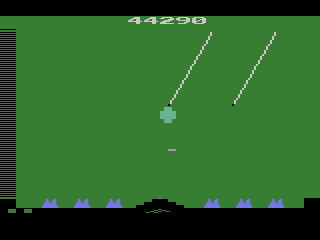 Rob Fulop: Galaxian. That's pretty obvious! The idea was to have a game where there was a lot to see. The farther you got, the more there was. There are basically seven different monsters,
and we colored them eight different ways. This led to 56 variations. Actually, there are 84 waves. It's a big game to see everything (Note: the graphics and play mechanic more closely resemble Phoenix, obviously).
Rob Fulop: Galaxian. That's pretty obvious! The idea was to have a game where there was a lot to see. The farther you got, the more there was. There are basically seven different monsters,
and we colored them eight different ways. This led to 56 variations. Actually, there are 84 waves. It's a big game to see everything (Note: the graphics and play mechanic more closely resemble Phoenix, obviously).
Q: The graphics for Demon Attack were rather impressive at the time.
Rob Fulop: Actually the trick to the Demon Attack graphics was it was the first game to use my scotch taped/rubber banded dedicated 2600 sprite animation authoring tool that ran on the Atari 800. The first time Michael Becker made a little test animation and we ran Bob Smith's utility that successfully squirted his saved sprite data straight into the Demon Attack assembly code and it looked the same on the VCS as it did on the 800 was HUGE! Before that day, all 2600 graphics ever seen were made using a #2 pencil, a sheet of graph paper, a lot of erasing, and a list of hex codes that were then retyped into the source assembly code, typically introducing a minimum of two pixel errors per 8x8 graphic stamp.
Q: The manual mentions that after 84 waves, the game stops. 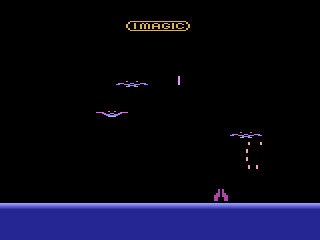
Rob Fulop: That's an interesting story.
The "game over" bug in Demon Attack sprung from a
sloppy bad idea, hatched
literally two days before the code freeze, after
which the game would officially leave Development and enter Production.
I had spent prior two weeks desperately crunching what had started as 4,500+ bytes of compiled DA 6502 assembly into the 4,096 available on the ROM chip. So I spent two weeks trying to take out 9% of the Demon Attack code/data without losing game functionality or introducing any new bugs. It's the kind of work that is fun for awhile, and gets increasingly less fun the closer one gets to the end. Getting to 4,200 was easy, getting to 4150 was much less so. The next 30
bytes come out one at a time, using byte-saving techniques that no dignified programmer would ever admit to. And then the final 25 bytes are pure examples of guerilla street coding in its most raw form. In the case of Demon Attack, I ended up stumbling across a pot of gold right at the end - finding a seven byte color data table that was originally intended to add more color variation to each game level, but never been used. So after deleting the unused table, the game was
actually UNDER 4090 bytes, with six glorious bytes left over to spare! I remember walking into lunch that day feeling like a true 2600 Code BOSS, and bragging about my six unused bytes, so the challenge now became, "What can be done in six bytes to improve the game?"
So I thought, "Hey I could have the game END!" If somebody beat these angry demons, how would they respond? Maybe they would just shut the game off and go away - the equivalent of beating a five-year-old child at checkers, whose shame of being defeated combined with their immaturity results in them turning over the checkerboard and running away, thus taking the victory "away" from their opponent. So that was it! Turns out six extra bytes did the deed:
------ next level initiation - run this code to set stuff up for the next level
LDA game_level. ; Retrieve current game level number
CMP #MAX_LEVELS ; Check if the last level of the has been completed
Loop. BGT Loop. ; If the new level number has bumped up over the maximum levels (84) then go into an endless loop
So the game essentially "froze" after beating level 84. Ship it.
And yeah, so like three days later the game is shipped to Sears and Toys R Us, we started getting the, "WTF, the screen goes black after my kid played DA for two days straight." calls. Whoops. My bad. Two minutes later, the "stewpid" game over feature is gone - but obviously not forgotten. I don't know how many units shipped in the first run - lots and lots of them, probably 100k - but I really don't know.
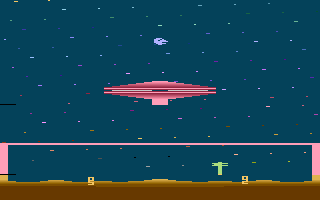 Q: Cosmic Ark was a pretty hard game.
Q: Cosmic Ark was a pretty hard game.
Rob Fulop: That was difficult?
Q: I thought so.
Rob Fulop: You see, that's the problem with making a video game. If it's more difficult than the designer can play, then how do you test it? I don't know if it's possible at the higher levels.
Q: I've gotten up to these "Pac-Man"-type beasties, at which point it gets so fast, it's unbelievable.
Rob Fulop: We actually had a promotion at Imagic to try to name all the creatures.
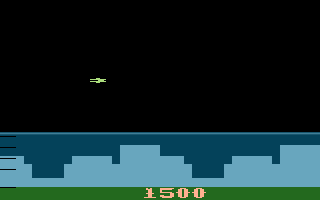
Q: Is there some kind of connection with Cosmic Ark and Dennis Koble's Atlantis?
Rob Fulop: Oh, right, the little space ship! At the end of Cosmic Ark, this little space ship flew away, and we wound up putting it in Atlantis. We were going to put the ship in a bunch of games.
Q: I noticed on some versions of Cosmic Ark, the TV Type switch flips the star background on and off. Were you aware of this?
Rob Fulop: No. The star field was done because of a bug in the 2600 hardware (Ed: The starfield pattern is the result of two different clock timings beating against each other INFO). Later models don't have this, so there may be some differences there.
The year Ark was introduced, if I recall, we actually rented a big motor home so that we could put our dev system in the back and get two extra days of programming time driving across the country instead of flying so we could be editing code right up to the MOMENT before the show launched. It was all about trading off time vs. quality.
Q: Getting back to Demon Attack, what was the lawsuit with Atari all about?
Rob Fulop: Atari sued us (Imagic) over the Demon Attack version for the Intellivision. It looked like a game that Atari did (Ed: Phoenix), but the suit was later dropped (Ed: According to this New York Times article, the case was settled).
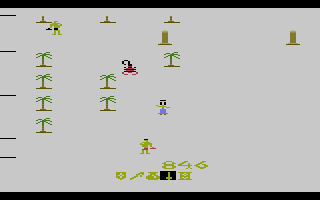 Q: Were there any games in your 2600 career that you never finished?
Q: Were there any games in your 2600 career that you never finished?
Rob Fulop: I worked on an Egyptian-themed game at Atari before I left. It never quite worked out, and we didn't like it so it never got finished. Later on, it became Riddle of the Sphinx (Ed.: Not sure why Atari wouldn't have sued over that). About half the games that got started were never completed. Bob Polaro did a neat Road Runner game. Was that ever released?
Q: Yes, it actually came out about four years ago. I think it was done very well.
Rob Fulop: He started that game about eight years before. I think the best cart of all time was Douglas Neubauer's game...
Q: Solaris?
Rob Fulop: Yes. That was the best thing when I left and he spent two years "in the dark" just doing that game. But there was no market for it when he was done.
Q: That's a fantastic game.
Rob Fulop: What do you think is the best 2600 game?
Q: Probably Solaris. It's definitely one of my favorites.
Rob Fulop: I also have a GameLine unit from back then. It let you load carts over the phone...
Q: That's definitely a collector's item! I remember seeing the ads for it when they were trying to get people to sign up. Did you ever use it?
Rob Fulop: No, it never worked (Ed.: The GameLine service was active for several months).
Q: What was it like developing for the VCS back then?
Rob Fulop: You would have loved some of our last resort byte saving tricks, when we were trying to crunch the code to fit into 4k. By the end, we were DESPERATE. One of my favorites, was changing a sound (or graphic) table to begin with hex code $60, which would allow that byte to do double duty, as a RTS at the end of a subroutine, and as the first byte in the sound data table. There were other doozies, but this one in particular stuck in my memory as truly representative of how sick we were at the time.
Q: With your Imagic games, were there any little tricks that you put in? In Fathom, the company's address is shown at the end of the game...
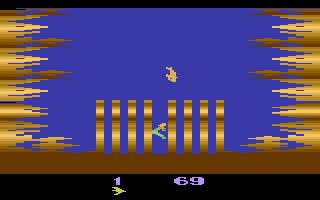
Rob Fulop: I never liked Fathom.
Q: Really? I thought it was a good game. The layout is quite big.
Rob Fulop: It was an 8K game. That was the last game I did. I never knew what it was when I started. For all the other games, I had a vision for what they were going to be. Fathom started with a neat picture that Michael Becker drew of a dolphin jumping out of the water. He drew this graphic and we made a game out of it. There was never any vision of what the game was. It was this kind of "epic" where you're underwater, and then you fly in the air. There are mermaids, too. It just never felt like a game. The best games are simple with a real vision of what it is, like Pitfall (by Activision).
I never really liked how the dolphin jumping out of the water never really seamlessly segued from the dolphin swimming up from under the water. It's a real cheat, obviously, because at some point I take away joystick control from the user and just smash the animation up on the screen, letting the user control the dolphin again when it lands. The "right" way to do it would be to actually move the dolphin itself OUT of the water and either
morph it into a seagull right in front of your eyes, or, have the dolphin arc and dive back in to the water, with a little splash animation. Such is how I wanted it to work, anyway.
But nobody could bare the thought of tossing out the little dolphin jump animation; after all, such had been the genesis of the whole game. That animation was truly a "precious little child", and my wanting to "kill it" was quickly shot down by Dennis Koble; when we disagreed, Dennis brought in the Marketing people, and Bill Grubb, the CEO, and they beat me up pretty bad that it was fine as it is. So that little animation remained, and to this day, I can't look at Fathom
because of it; it's just so annoying knowing that another week or so would have made the dolphin jump sequence so much cooler. Ever since then, I make it a point to kill my children a LOT earlier in the dev cycle, tossing out our early first efforts that looked great the first time, but as we got better at the task at hand, quickly became "second rate", until if left in the whole, becomes a true eyesore.
Q: Pitfall! had a similar beginning as well. It started with a little demo of a running man. David Crane just sat down and figured out the rest.
Rob Fulop: Well, we can't do that anymore! Now, with CD games, it's like making a movie. You have 10 people working on a project, and you can't just sit down and make it up as you go along.

News blurb in the 5-17-86 issue of
Popular Computing Weekly (page 4).

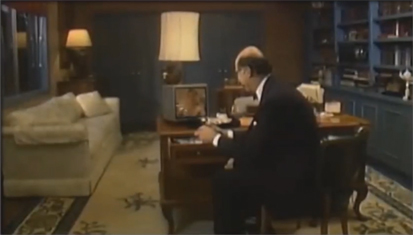
Screenshots from Scene of the Crime. This was the early version of
what later became Night Trap.
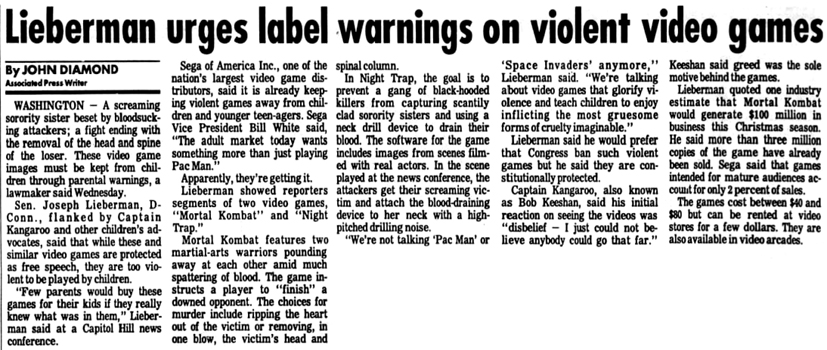
Citizens' Voice 12-2-93
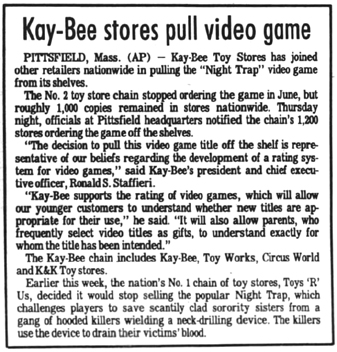
Citizens' Voice 12-18-93
Q: After Imagic, what did you end up doing?
Rob Fulop: I did some on-line games for Quantum, and then started making active video for Hasbro (Ed:
For their NEMO system). I did a few games for them, one of which is for the Sega Genesis CD called Night Trap. It's basically a movie. It's
interesting - if you look back at Night Driver, it had 2K of code. The last project we finished involved 650 megabytes of code. Even though 12 years have gone by, and we have 2,000 times as many resources to use, the skills that make use of those resources to design a game are exactly the same.
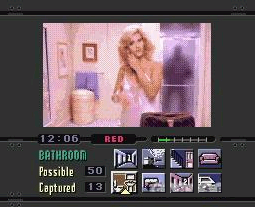
Q: It's still the same process of approaching it?
Rob Fulop: I think so. You're basically resource-constrained. It's funny - I often call these CD players the "VCS" of video. The 2600 VCS was really a horrible machine to program on.
Q: Other programmers have mentioned the same thing - it was really hard to get a good game out of it.
Rob Fulop: It took a year.
Q: How long does it take you to do a CD game?
Rob Fulop: A year, but now its 20 people and the budgets are half of a million dollars. With games such as Night Driver, it was one guy sitting down for nine months, like writing a book.
Q: So after Hasbro, you went to PF. Magic?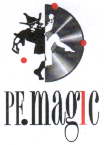
Rob Fulop: Yes. At PF. Magic, we do about five or six large projects a year
Q: Is this your own company?
Rob Fulop: I have a partner, John Scull. There are 18 people in the company.
Q: May I ask what "PF." stands for?
Rob Fulop: We don't ever tell anyone - it's our secret! (Ed: See below for what it actually stands for.)
Q: I thought maybe there was something with the names - Imagic and PF. Magic.
Rob Fulop: I just like "magic" in the title of a company. There's really no connection.
Q: What exactly are you working on?
Rob Fulop: We're working on games for the Sega Genesis CD, the 3DO platform, CDI, and the Super Nintendo.
Q: People in the industry are predicting the 3DO to be the next big thing.
Rob Fulop: We don't know. At this point, I've worked on 15 platforms in my life. To me, they're all the same. It's the next "2600". Whatever comes out next, they'll say it's wonderful, and it won't have enough memory! The 3DO is definitely the next big thing to get excited about. But it's all the same - none of them have enough memory or processing power to do what you want, and they all take a year to do products for. That's been the same for the last 12 years.
Q: What do you think about virtual reality?
Rob Fulop: Well, there's definitely no rush. I don't think it's going to happen anytime soon, not in the way it's being portrayed. It's just not that exciting. At the end of the day, I think Tetris is more fun! I think something cool can come of it, but it won't be for a while.
Q: It will be interesting to see where they take it. Right now, it's sort of a gimmick, or a toy. Virtual Reality has been around for years.
Rob Fulop: Battlezone was a "virtual" game.
Q: What are some of your favorite games?
Rob Fulop: Tetris, Q*Bert, Pac-Man... I like puzzle-type games, and those that are abstract, rather than those that are more realistic or that try to imitate reality.
Q: Have you kept anything from your days at either Atari or Imagic?
Rob Fulop: Somewhere in my basement I have a folder filled with yellowed sheets of graph paper from Atari containing the final sprite graphics from Night Driver, Atari 800 Space Invaders, and Missile Command - including the infamous "RF" sprite graphic, which stood in place of the right-most destroyed city at the end of Game #13.
Q: Do you own an arcade machine, or did you at some point?
Rob Fulop: I never had the space. I would if I had the space. Pinball, too. I looked at a Missile Command cabinet once.
Q: What were some of your experiences working for Atari? Any stories or anecdotes from those days that you recall?
Rob Fulop:
I particularly enjoyed attending one of the early
"classic gaming" parties a few years ago, and being told by some woman that she
heard that "Rob Fulop will be here later on!" I wasn't sure if she
was putting me on or not, so I asked her what she had heard about the guy.
She quickly confided in me that she had never met Mr. Fulop personally, but she
had hear he talks rather fast, and was funny! I'm not sure if she was more
embarrassed than I was when she finally figured out who I was, but it was quite
a memorable moment!
Another classic moment was during the time that Night Trap was getting a lot of
negative publicity, with the primary "witch hunt" being led by Senator Joe
Lieberman, who decided that "cleaning up video games" was as good a cause as
any for him to get behind. One day, my friend Michael (who wrote for the
Washington Post at the time) called me up to announce that Senator
Lieberman had gone out and recruited none other than CAPTAIN KANGAROO to show up
in front of his "clean up video games committee" and talk about Night Trap, and
for me to tune my television in to whatever channel was broadcasting this
spectacle. I still remember the chilling feeling of watching my childhood
hero and friend, Captain Kangaroo, spout out some sort of rhetoric about how
damaging a game Night Trap was, etc. It was soooo clear that the old guy
had never even seen the game, let alone play it.
Q: Do you ever see any of your old fellow 2600 programmers?
Rob Fulop: Oh yeah. I see Dennis Koble all the time, and David Crane. Many of them are still active in the industry. I think Warren Robinett went to work for the military, and Howard Scott Warshaw doesn't design games anymore, but most of them are still around today.
Right after the interview was done, Rob mentioned that he had several copies of an unreleased game that he was interested in selling. For more information about Cubicolor, you can find a current list of Cubicolor owners HERE.
* Note: PF. Magic stands for “pure fucking magic”. The following is a website quote from Fulop that I recently found:
|
Pure F---ing Magic Such was an old saying from my days at Atari…that ultimately our customers care not for our slick technical skills…they really don’t give a hoot about how clever our engineers are…what they REALLY care about is the overall EXPERIENCE they are having with our products… Like who CARES how the software that is running inside your PC works. All that matters is that it makes you believe that a living DOG is running around your desktop? From the perspective of a customer, it’s simply pure f---ing MAGIC. That’s all they really need to know, so such reminded us that all we care about is that our customers are ENCHANTED…and not to get overly in love with our technology, which is a real problem in some companies. But we told people different things over the years, depending on who was asking. Positive Future (told to Venture capitalists) Partially Funded (told to people we owed money to) Perpetually Fighting (told to employees, when they asked why everything seemed so difficult at times, and why did so many smart people have so many different opinions) Hope that helps Cheers Rob Fulop Co-Founder and Creative Director of PF. Magic |
In 1997 Fulop sold PF. Magic, Inc. to The Learning Company. Currently it's owned by UbiSoft. The original Petz has sold over 1.5 million copies worldwide and the brand has grown to over 22 million copies since coming under Ubisoft.
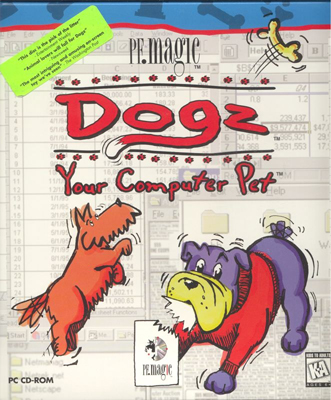
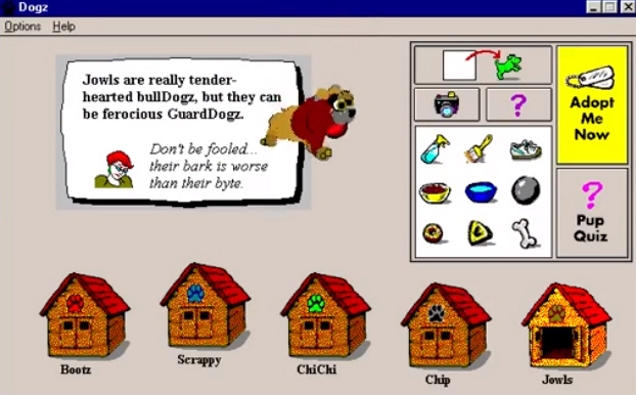
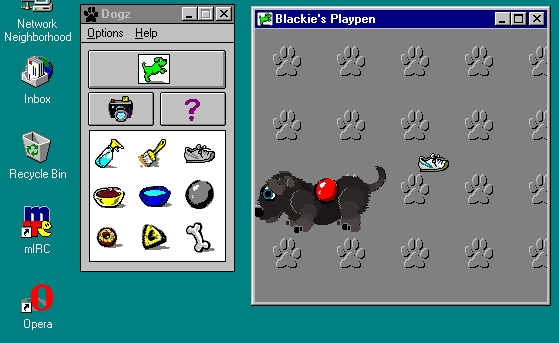
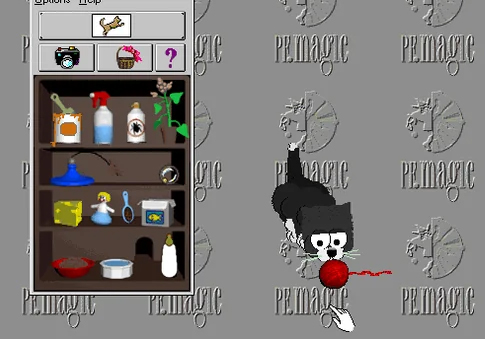
Dogz: Your Computer Pet was released in 1995, with Catz being
released in 1996.
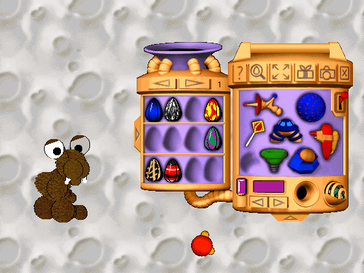

Oddballz: Your Wacky Computer Petz and Babyz: Your Virtual Bundle of
Joy were released in 1996 and 1999 respectively.
In 2000, I had the opportunity to ask him a few more follow-up questions…
Q: I recently learned about the hidden initials in your game, Fathom. Besides VCS Missile Command and 400/800 Space Invaders, do you know of any Easter eggs in your other games?
Rob Fulop: The little green saucer, which appears in Cosmic Ark, flies around somewhere in Fathom, but I don’t recall how to trigger it. There were no other hidden things in any carts that I worked on, however Night Driver has a terrible screen glitch. If you drive with the paddle hard left and then turn hard right at certain parts of the track, the screen will roll – there’s too much calculation going on in the processor and it misses a screen retrace (Ed. The graphics for the saucer aren't in the code, so it's unknown if this was removed in the released version).
The original version of Night Trap we did for Hasbro featured a hidden scene with a topless Dana Plato, but I don’t know if it was added into the Digital Pictures version that came out on the Sega and PC. Dogz/Catz II and III contain a few hidden animation sequences, but I ain’t telling what they are nor how to trigger them!
Q: On your website you mention that when you left Atari, you no longer felt the need to “hide” your name in your work. Why did you decide to hide them in Fathom?
Rob Fulop: Basically I first did the initials because programmers received no credit for our work. Then after a few games at Imagic, with my name on the box, people could actually contact me. I had a big bunch of responses to the earlier hidden initials. I realized that people just plain LIKED the little, hidden treats, so I put them back in Fathom.
Q: Can you tell me anything about Reaction (the precursor to Cosmic Ark)? Was Midway’s 1980 coin-op Space Zap an inspiration?
Rob Fulop: Cosmic Ark started with a bug discovered during Demon Attack that filled the screen with stars! To this day, nobody has ever explained to me WHY the player/missile register in the chipset goes crazy if diddled with the wrong way, but the effect blew me away and I wrote down how to recreate it (Ed.: Someone has finally done a complete analysis of what causes it). So then I started fooling around with trying to make Space Zap – a game I adored and thought perfect for the VCS. I added the star field trick, and then I turned the cannon into a big space ship. At that point the game could have shipped, but it didn’t feel done; it felt sort of boring, so the secondary game of flying to the planets took up about 6 months of trying different stuff.
Q: Tod Frye has been claiming for several years now that Atari had a rule against having black backgrounds in any game that wasn't a space game, which is his excuse for not using one with his VCS Pac-Man game. Do recall any such rule?
Rob Fulop: I never heard of the black background rule, either. But I was taught that 2600 games all needed an idle mode that cycled colors to prevent burn-in. We called such a mode an "attract mode", which was taken from coin-operated arcade games. It was the basic “do nothing” mode. If the player was not playing and walked away, the game needed to color cycle thru the color wheel.
Q: Being you're a former professional poker player, I’m surprised you never designed a poker game (before RabbitJack, under Advanced Program Technology, a company you co-founded with Dennis Koble. Dan Peri did the sounds and Ernest Adams did the PC-end software). Any reasons why?
Rob Fulop: I didn’t think it made any sense to play a game involving “secret information”, such as poker, with a computer player/dealer, as players would worry that the computer was “peeking”. Let’s face it, if I deal the cards and also know what they are, how fair of a game is it?

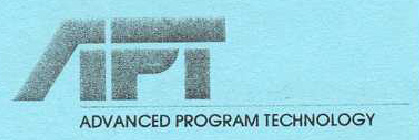
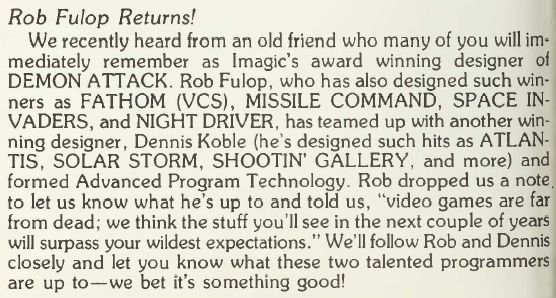
News blurb from the May 1984 issue of
Computer Entertainer.
In Jan. 1999 Fulop posted about Actionauts - his only unreleased VCS game - in RGVA:
|
"I was about 35% completed with on the VCS before I left Imagic in 1983 after finishing Fathom. I have NO IDEA what I should do with this. It was code named ACTIONAUTS. And take my word for it ... as a game ... it STINKS. It really stinks. But as a collectible ... well ... given that only one exists ... I gotta believe it has some value in the world. I'll post the object code on a WEB SITE in the next month or so ... and all you cowboys can come check it out." |
It (very) briefly appeared at the CGE2K1 Blue Sky Ranger's booth, and it looked close to being complete. In 2002 Fulop posted this thread on Atariage:
|
"I have an unreleased prototype of a game that I made in 1984, soon after leaving Imagic. The game is called "Actionauts" ... it involves the user programming a little robot around the screen so that it can navigate itself through a series of mazes. The game was abandoned before it was completed due to the lackluster market for 2600 games at that time. It's quite playable, but lacks the "finish" and polish of a released title. I'm hardly in a position to add anything to the game - it's sort of an 'as-is' sort of thing. I don't have a 2600 development system, and even if I did, I long ago tossed out a printed version of the source code - the game is a big jumble of op codes. It didn't get finished for a reason - the interface and game concept turned out to be better suited for a machine with more RAM and a keyboard. The concept was explored on the 2600, and later found its way onto the Commodore 64. The reason I originally abandoned the game when it was 80% completed ... remain true ... there are some games better left to more resource-rich systems ... Actionauts is one of those games. It's fun, but after playing it, it was clear that this sort of game deserved to be offered on a higher powered computing platform." |
Unfortunately, the thread ended due to people overwhelming Rob with requests to finish the game, and one particular person (
Roman Sharnberg) telling him outright people would dump any carts he sold and make reproductions, adding, "I know I would dump it." Another 5 years would pass before he publicly mentioned the game again, this time in a 2007 interview with Planet Atari:|
"And somewhere in my box of 2600 stuff, remains a sole copy of "Actionauts", a robot programming game that is maybe 1/2 completed, that I probably should get around to making available to the collector community." |
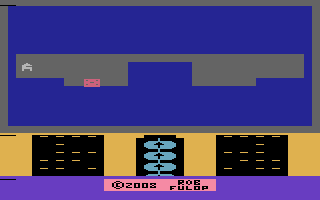
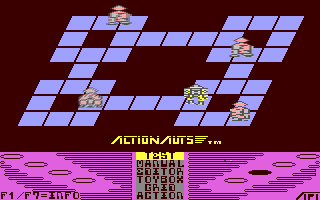
Later that year, Rob finally went forward with plans to release the game, via an announcement on his website. A few months later he posted a follow-up that the game was being completed, with the help of John Payson. Rob started another thread on Atariage in early 2008, this time inquiring about a fair price for the game. Once again, the thread turned sour, with a few people even insulting Rob for wanting a fair compensation for his efforts; one person (Leonard Herman) told him, "The days of programming 2600 games for profit are over. And it's sad to think that people, regardless of their stature, should expect otherwise." Rob made his feeling known about how certain people treated him:
|
I wish I left with a better feeling about it, suffice it to say that I do feel 'chased off the board' here ... and I hope that if another one of my colleagues from the past venture into a place such as this .. they receive a warmer welcome. If such happens, it certainly will not be from my recommendation." |
The thread was locked a few posts later, ironically enough by the same person who 'threatened' to dump his carts in the previous thread, and then hypocritically chastised people for similar insults in this thread. Thankfully, Rob ignored such toxic comments and released boxed copies of the game for the community to enjoy. In 2009, he promised to release the ROM once the game was sold out, but as of 2023 he still hasn't released it. It's unknown if the version he was going to release was the original version (which is what archivists want) or the released version.
Here's a video showing the Easter egg in Missile Command:
Here's Imagic's TV commercials for Demon Attack and Cosmic Ark:
Here's a TV ad for Venture showing Atlantis, Cosmic Ark, and Demon Attack.
Here's videos showing some glitches in Demon Attack:
Here's a video showing all 14 planets and 7 beasties in Cosmic Ark, and one showing some tricks and glitches:
Here's a video of a complete game of Fathom, and one showing some Fathom tricks:
Here's a video that's hidden in the Sega CD version of Night Trap that shows Hasbro executives watching a demonstration of the "NEMO" system in Pawtucket, RI in December 1986. The game being played is Scene of the Crime, the early version of what later became Night Trap:
You can learn more about Rob Fulop and his work at his website: www.robfulop.com
| GAME | SYSTEM | COMPANY | STATUS |
| Superman | pinball | Atari | released |
| Space Invaders | Atari 400/800 | Atari | released |
| Marketing Adventure | Atari 400/800 | Atari | not completed |
| unknown "tennis" game | Atari 400/800 | Atari | not completed |
| Night Driver | Atari VCS/2600 | Atari | released |
| Missile Command | Atari VCS/2600 | Atari | released |
| "Ping Pong" game | Atari VCS/2600 | Atari | not completed |
| "puzzle" game | Atari VCS/2600 | Atari | not completed |
| "first-person Missile Command AKA Death From Above 3" | Atari VCS/2600 | Atari | unreleased |
| Demon Attack | Atari VCS/2600 | Imagic | released |
| Cosmic Ark | Atari VCS/2600 | Imagic | released |
| "unknown game" | Atari VCS/2600 | Imagic | unreleased |
| Fathom | Atari VCS/2600 | Imagic | released |
| Cubicolor | Atari VCS/2600 | Imagic | unreleased |
| Actionauts | Atari VCS/2600 | Imagic / Advanced Program Technologies | not completed |
| Actionauts | C-64 | Advanced Program Technologies | unreleased |
| Rabbit Jack's Casino | C-64 | Advanced Program Technologies (for Quantum Link/America On-Line) | released |
| Techforce | Interactive Productions (w/ Axlon) | unreleased | |
| Scene of the Crime (demo) | NEMO | Interactive Productions (w/ Axlon) for Hasbro | unreleased |
| Sewer Shark | NEMO (later released by Digital Pictures for Sega CD, 3DO) | Interactive Productions (w/ Axlon) for Hasbro | released |
| Night Trap | NEMO (later released by Digital Pictures for Sega CD 32X, 3DO) | Interactive Productions (w/ Axlon) for Hasbro | released |
| Third Degree | CD-I | Interactive Productions (for Philips) | released |
| Max Magic | CD-I | Interactive Productions (for Philips) | released |
| Edge 16 (hardware interface) | Genesis, SNES | Interactive Productions (became PF. Magic), for AT&T | unreleased |
| PaTaank | 3DO | PF. Magic | released |
| Ballz | Genesis, C-64, SNES, 3DO | PF. Magic / Accolade | released |
| Dogz: Your Computer Pet | PC | PF. Magic / Virgin Interactive Entertainment | released |
| Catz: Your Computer Pet | PC | PF. Magic / Virgin Interactive Entertainment | released |
| Oddballz: Your Wacky Computer Petz | PC | PF. Magic / Virgin Interactive Entertainment | released |
| Catz and Dogz II: Your Virtual Petz | PC | PF. Magic / Mindscape | released |
| Catz and Dogz 3: Your Virtual Petz | PC | PF. Magic / Mindscape | released |
| Catz and Dogz 4 | PC | PF. Magic / Mindscape | released |
| Babyz: Your Virtual Bundle of Joy | PC | PF. Magic / Mindscape | released |